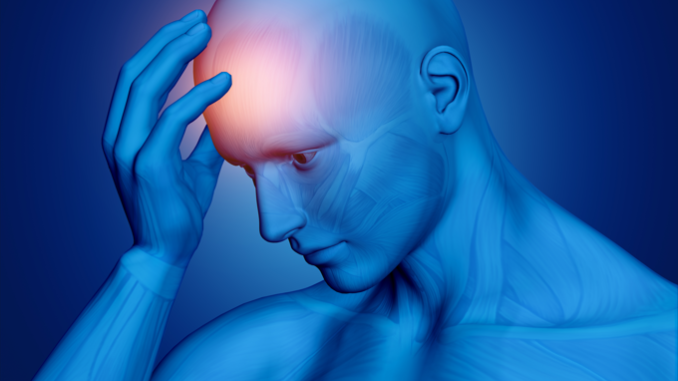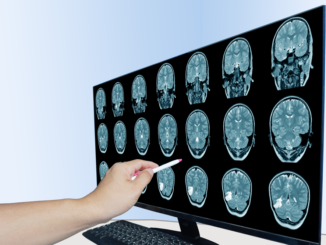
Table of Contents
What is “Chemical Imbalance in the Brain”?
A chemical imbalance is a diagnosis that can be made by psychiatrists or physicians to explain the reason behind changes in a person’s neurological state. The human body is a complex system that includes a wide variety of chemical components, such as neurotransmitters, hormones, and enzymes, among others.
An individual can develop a chemical imbalance as a result of having a disease, having poor nutrition, being injured, being under chronic stress, or even just the natural process of ageing.
When there is a decrease in the levels of potassium, there is an accompanying increase in the levels of the stress hormone cortisol, as well as a reduction in the capabilities of the neurotransmitters. This leads to a chemical imbalance.
The signs and symptoms that arise as a direct consequence of a chemical imbalance do vary widely from one person to the next; however, there are a few scenarios in which certain characteristics are shared.

Chemical Balance in the Brain – Signs
The following are examples of signs and symptoms of a chemical imbalance:
Alterations in behaviour: This is a common sign, and an example of this would be a circumstance in which a person is happy and then suddenly becomes sad, but they are unable to explain the cause of their change in emotion.
Mania/Extreme sadness
Difficulty in completing the tasks that have been assigned
Anxiety
Sadness
Lack of interest, particularly in things that one used to take pleasure in doing
Insomnia or excessive amounts of sleep
Suicidal thoughts as well as multiple failed attempts to take one’s own life
Reduced libido
Fatigue
Abrupt withdrawal from all forms of social activity
A lack of insight into one’s feelings and excessive crying
Excessive amount of eating or a lack of appetite.
Reduced levels of concentration and focus
Chemical Imbalance in the Brain – Symptoms
An imbalance in the chemical balance can lead to a variety of conditions, depending on the particular chemicals that are involved.
They are as follows:
Diabetes
This is a condition that develops when there is an abnormally high amount of sugar in the blood for an extended period of time.
This condition is frequently associated with a chemical imbalance in the brain, which, as a result, leads to a disruption in the production of insulin, which is necessary to ensure that the cells of the body are able to take in glucose.
Diabetes happens due to insulin being out of balance. In this instance, one exhibits, among other signs and symptoms, polyuria, polyphagia, and an increase in the amount of water consumed.
Mood disorder like Depression
The chemicals norephineprine, dopamine, and serotonin are all examples of neurotransmitters that are active in the human brain.
These chemicals play a significant part in determining a person’s mood, and any change in their level can lead to changes in a person’s mood and may cause depression in some people.
Disorders Related to Anxiety
An imbalance in chemical levels is not typically associated with a less severe form of anxiety.
Extreme cases of the condition, such as agoraphobia and panic disorder, point to a clear chemical imbalance.
It has been demonstrated that experiencing symptoms of anxiety is linked to having low levels of a chemical known as serotonin. A state of anxiety also has the effect of reducing the amount of this chemical. It is well established that the application of strategies that reduce anxiety can raise serotonin levels.
Attention Deficit Hyperactivity Disorder
A chemical imbalance in the brain is the cause of the three most common symptoms of attention deficit hyperactivity disorder (ADHD). People who are affected by this condition are unable to carry out even the most basic of tasks.
Diagnosis of Chemical Imbalance in the Brain
The complaints that are being presented, along with the signs and symptoms, are what will guide the testing for a chemical imbalance.
PET Scan – The Positron Emission Tomography (PET) Scan is an advanced form of imaging technique that is frequently utilised in the process of determining whether or not there is a chemical imbalance.
It is helpful in understanding the changes that may have taken place in certain neurotransmitters as a result of the event.
A PET scan can also be helpful in determining the best course of treatment for an individual.Due to the high cost, this examination is not performed frequently. It is done only in exceptional cases.
Urine Test -This test can assist in determining the levels of a number of different neurotransmitters in the body. It will be possible to ascertain the various chemical mixtures’ concentrations and proportions through the use of this test.
Saliva Test – Tests using saliva can also be helpful in determining the levels of chemicals in the body.
It is not possible to diagnose or treat “chemical imbalance” with a single measurement or test. The evaluation of a person’s behaviour, speech, mood, and level of perception are some of the factor that a doctor takes into consider before approving a diagnosis.
Chemical Disturbance in the Brain – Treatment
Both natural and conventional medicine have their place in treating the chemical imbalance in the brain.
The following are some of the treatment options:
Medication: Depending on the symptoms that are currently being presented as well as the condition, a patient may be prescribed antipsychotics, anti-anxiety medications, or antidepressants.
These medications work in a variety of ways to improve a person’s state of mind by resetting the chemical equilibrium in the body and, as a result, alleviating the symptoms of the condition from which the individual is suffering.
The term “talk therapy” more commonly refers to the component of psychotherapy known as cognitive behavioural therapy.
The goal is to assist the individual in recognising what factors led to the current condition, as well as the symptoms associated with it and the appropriate coping mechanisms. This is accomplished successfully with the assistance of a seasoned medical professional.
Fisher Wallace Simulator – The Fisher Wallace Simulator is a product of modern technology that helps to restore chemical equilibrium in the brain in the event that the brain’s chemical levels are out of whack.
It is necessary to wear it on the head, and despite this, it is surprisingly comfortable and effective. t has been demonstrated to be significantly less hazardous than the drugs as well. It is possible to use it as a treatment for mental conditions such as anxiety and depression. The Fisher Wallace Simulator is also a treatment for insomnia.
Exercising – Dopamine is released in the brain as a result of physical activity, which is why exercise is so important. This chemical helps improve a person’s mood, which in turn helps alleviate symptoms of depression.
Vitamin D – It is known that a lack of vitamin D can cause a chemical imbalance, which can lead to feelings of anxiety and depression. Either by consuming foods that are high in vitamin D, such as liver, oils, fish, salmon, and egg yolks, among others or by exposing oneself to the sun for extended periods of time, one is able to get a healthy dose. Maintaining optimum levels of Vitamin D, in fact, ensure that an individual’s mood remains stable.
Omega-3-Rich Foods -These foods do contain the essential fatty acids that the body needs.
It is well established that fatty acids improve the functioning of the brain.
Consuming sufficient quantities of these foods on a consistent basis is one of the most effective ways to treat mental health conditions like schizophrenia, bipolar disorder, anxiety, and depression.
Acupuncture – Acupuncture is a tried-and-true medical practise that is also quite widespread and utilised.
The circulation of blood is improved, and the chemicals in the brain are helped to remain more stable, thanks to this factor. It is true that it alleviates pain, and it also improves a person’s mood.
Medications made from herbs – In comparison to pharmaceuticals, herbal treatments are considerably more natural and secure. In the treatment of depression, one common herb that is used is called St. John’s Wort.
It is necessary for an individual to inhale the scent of lavender in order to benefit from its use as a treatment for anxiety, depression, and insomnia, as stated by the UMMC. The use of this herb has been shown to improve both one’s ability to relax and one’s overall mood.
Ginkgo biloba is yet another herb that has been shown to restore chemical balance after it has been disrupted as a result of stress. Additional examples include kava, passion flower, ashwagandha root, and valerian root.
Authoritative Clinical References
Effect of chemical imbalance and depressive symptoms – https://pubmed.ncbi.nlm.nih.gov/24657311/






Be the first to comment